


























MIDWEEK UPDATE 13 DECEMBER 2017
Plan Your Weekend……..Forthcoming Events…….Aviation News
Worldwide Incidents and Accidents……This Week in Aviation History

We are not aware of any aviation events planned for this weekend


3rd Saturday of every month. Microland. Bring and braai. Fires and bykos provided. Fires start from 09h30. Contact person: Nick Swardt 082 441 8011 or Alan Hussey 072 82 2341
28: FACF Fly in. ST Francis Airpark. Reserve date of 29 December in case of bad weather. All welcome, food and beverages will be available. Contact Barry Culligan mailto:barry@otto.co.za


7: SAAF Museum AFB Zwartkop open practise day. Officer Commanding - Museum oc@saafmuseum.org.za 012 351 2290
20 to 21: Sport Aerobatics Gauteng Regionals. Vereeniging Contact Annie Boon E-mail: chunge@mweb.co.za.
3rd Saturday of every month. Microland. Bring and braai. Fires and bykos provided. Fires start from 09h30. Contact person: Nick Swardt 082 441 8011 or Alan Hussey 072 82 2341


8: EAA Chapter 322 meeting. Dicky Fritz Moth Hall Edenvale. Contact: editor@afskies.co.za
3rd Saturday of every month. Microland. Bring and braai. Fires and bykos provided. Fires start from 09h30. Contact person: Nick Swardt 082 441 8011 or Alan Hussey 072 82 2341
21 to25: Armed Forces Day Kimberley.


3: SAAF Museum AFB Zwartkop open practise day. Officer Commanding - Museum oc@saafmuseum.org.za 012 351 2290
8: EAA Chapter 322 meeting. Dicky Fritz Moth Hall Edenvale. Contact: editor@afskies.co.za
9 to 11:Aero Club of South Africa air week at Middleburg airfield. Contact Alan Evan-Hanes E-mail: alan@aeroclub.co.za
3rd Saturday of every month. Microland. Bring and braai. Fires and bykos provided. Fires start from 09h30. Contact person: Nick Swardt 082 441 8011 or Alan Hussey 072 82 2341
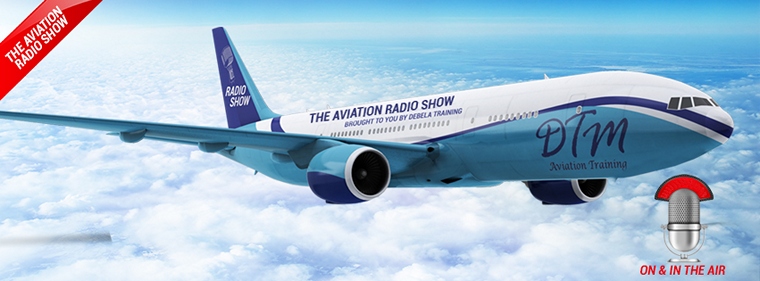
The Aviation Radio Show; get all your questions answered in one place. To listen to a recording of the live broadcast click on the link:
www.debela.co.za/aviation-radio-show

THE A22LS - FLAGSHIP OF THE AEROPRAKT RANGE.
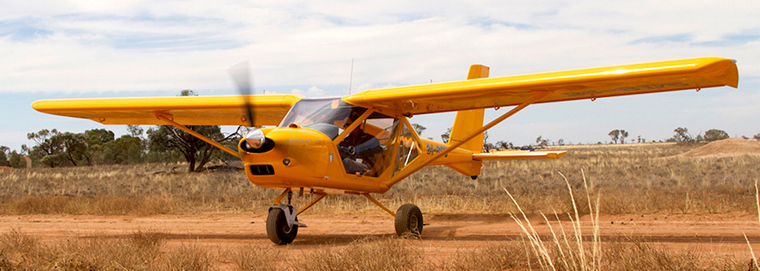
Photo © Aeroprakt
Without a doubt the flagship of the Aeroprakt aircraft; The A22LS is produced with standard oversize main gear tyres, retaining the original slightly smaller nose wheel. The aircraft comes with two options of controls, the central mounted Y stick, or twin yoke controls as found on most general aviation light aircraft. The A22LS has proven itself globally as a safe, professionally build, sturdy and rugged aircraft. It's flight envelope which combines a good cruising speed as well as a very low stall speed is extraordinary and perfectly suited to operations including surveying, air photography, anti-poaching patrols and wildlife monitoring. The A22 has an exemplary record as the ideal recreational and training aircraft with its stability, forgiving flight envelope and un-cramped cabin comfort. The A22LS legally and safely carries payloads of 200kgs and easily gets into and out of the smallest unprepared strips.
An extremely pilot friendly, versatile and "strap it onto your back" type of aircraft that does everything you ask of it in a smooth and responsive manner. The A22 is a rugged yet easy to handle airplane combining short field take off with a comfortable 90+ knot cruise speed, retaining its performance carrying full loads at high density altitude.
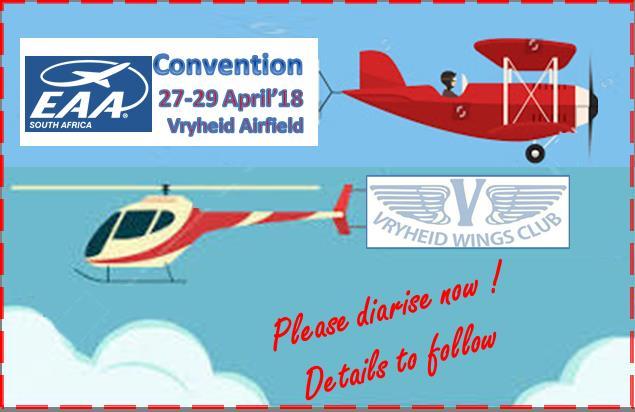
Yuri originally dubbed his new design "Shark," likely because of the distinctive fin. In Germany the plane has achieved certification to the demanding BFU-95 requirement but is known simply as the A22. In USA they call it the "Valor." In Britain, Australia and South Africa, with a respectful nod to its country of origin, it is called the "Foxbat." But what's in a name? The A22 is a superbly engineered aircraft with no aerodynamic vices.
NEW DA40 NGS TO PFA

Photo © Diamond Aircraft
Norway-based Pilot Flight Academy (PFA) has taken delivery of three new DA40 NGs from Diamond Aircraft Canada as part of its ongoing expansion plans. The academy is currently building an all-new fleet of DA40 NG and DA42 NG aircraft. They are equipped with jet-fuel Austro engines and the Garmin G1000 glass cockpits.
CEO Frode Granlund saying both types have been embraced by the students and flight instructors because of the modern design, great flight characteristics as a training aircraft, and very low noise- and vibration level.
"From a business perspective, the fleet of all Diamond Aircraft has also been a huge success," Granlund added. "The operational costs are much lower than with our previous fleet, and the utilisation is much higher due to less fuel stops and longer maintenance intervals."
Scott McFadzean, COO of Diamond Aircraft Industries Inc., said, "We are proud of our relationship with Pilot Flight Academy and commend them on their vision regarding new technologies."
TECNAM U.S. DELIVERS THE FIRST THREE OF THIRTY SPECIAL MISSION PLATFORMS FOR GEOSPATIAL DATA ACQUISITION.
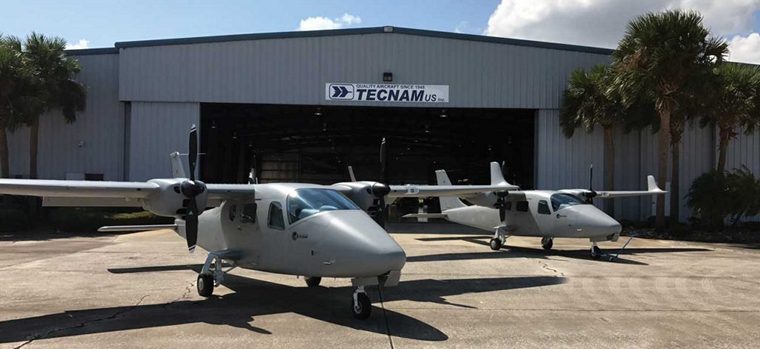
Photo © Technam
Tecnam U.S. announced today that on October 2nd, 2017 and November 20th, 2017 it completed the delivery of the first three (3) of an order for thirty (30) P2006T twin engine aircraft in its Special Mission Platform (SMP) configuration. The three aircraft now delivered are part of a 24-months contract to deliver 30 SMP aircraft to a geospatial data acquisition company modernizing its fleet to optimize operational costs and sensor availability. The company has options for an additional 24 P2006T SMP aircraft following the delivery of the first 30 aircraft commitment.
For this 30 aircraft contract the Tecnam SMP will be delivered with its standard, field proven, mission power system and dedicated hatch to accommodate multiple sensor packages, managed by Tecnam as Type Certification design changes.
The contract also provides for additional design services from Tecnam to optimize the installation for specific sensor packages under Tecnam's design authority and experience.
"Given the age of existing sensor platforms, costs to operate them and changes in the requirements of the sensors themselves, the P2006T is the right platform at the right time for bringing geospatial data sensing up to date. We are proud that our Customer has chosen Tecnam to provide aircraft for their fleet expansion and look forward to the opportunity to evolve the data sensing platform paradigm", said Paolo Pascale, CEO of Tecnam.

Photo © Pilatus
On 7 December 2017 Pilatus obtained type certificates from the European Aviation Safety Agency (EASA) and the US-American Federal Aviation Administration (FAA) for the first ever Swiss business jet. Certification of the Super Versatile Jet prepares the ground for initial customer deliveries, which will see the PC-24 business jet take off from Central Switzerland for its entry on the global market.

The first PC-24 prototype completed its maiden flight in May 2015. All three prototypes used in the certification programme have flown a total of 2205 hours worldwide so far. Some flight tests were conducted in extreme environments: in icing conditions and very hot temperatures, at altitudes and speeds not usually encountered in everyday operations. Other tests have included bird impacts, structural stress tests, noise tests and general function. All this to prove that customers may depend on this aircraft to operate safely and reliably at all times, in line with statutory requirements. In fact, Pilatus test pilots took the aircraft to the very boundaries of its limits and even beyond, flying it in configurations and maneuvers forbidden to the commercial pilots who will subsequently occupy the cockpit.
Oscar J. Schwenk, Chairman at Pilatus, had this to say on receipt of the type certificate:
"The PC-24 is the first ever Pilatus business jet. Naturally, the requirements associated with obtaining certification for this sort of aircraft are extremely rigorous, and I need hardly mention that we faced some big challenges. In 2013 we announced that the PC-24 would be ready in 2017, and now, shortly before the end of the year, we have achieved exactly that. And all performance data promised to our first 84 customers have been achieved or even exceeded. The PC-24 delivers a maximum speed of 440 knots (815 km/h) compared to the contractually agreed 425 knots (787 km/h) - to cite just one example. That is pure Pilatus, and typical of the qualities which set us apart!"
MISSOURI-BASED COXHEALTH WELCOMES NEW MD 902 EXPLORER
"This helicopter is absolutely perfect for meeting our EMS/air ambulance needs," said Susan Crum, RN, Cox Air Care Program Director. "Not only does the MD 902 offer excellent manoeuvrability and increased safety for our in-flight medical teams and the patients we serve, it also delivers unmatched reliability and low operating costs; allowing us to meet both patient care and operational objectives with ease."
The MD 902, featuring MD Helicopters' proprietary NOTAR® technology, offers improved safety, a larger cabin, smoother flight, and a reduced noise profile versus other helicopters in its class. This combination enables in-flight medical crews to safely deliver the critical care that could be the difference between life and death.
CoxHealth first chose the MD Explorer as its EMS/air ambulance platform in 2007. With this latest acquisition, CoxHealth has standardized its growing fleet on the proven MD platform, reinforcing their commitment to deliver operational economies alongside improved patient care.
The CoxHealth Air Care team has the option of having their newly certified MD 902 retrofit with MDHI's advanced, all-glass cockpit featuring integrated Genesys Aerosystems' Advanced IDU-680 displays. With the activation of this option, the CoxHealth team will become the first EMS/Air Medical MD 902 operator to field this advanced cockpit configuration.
LOM PRAHA TRADE A.S. AND ENSTROM HELICOPTER SIGN 480B-G HELICOPTER CONTRACT
Known as the 480B-G, Enstrom's turbine-powered model is equipped with the Garmin G1000H, offering glass cockpit capability for this helicopter. This equipment, coupled with the stability and easy maneuverability of the 480B, makes for the perfect training aircraft. "We looked at several aircraft models prior to deciding on the Enstrom 480B-G. said Miroslav Hejna, CEO of LOM PRAHA TRADE. a.s. We believe the aircraft and the Enstrom team are the best choice for the long term."
The contract plan has 2 480BG helicopters to be delivered in early 2018 followed by 4 later in the year. This also includes spares, tools, and both pilot and maintenance training at the factory. Of the 6 helicopters, LOM PRAHA TRADE will be using 4 of the Enstrom 480B-Gs for training the military pilots. "The Enstrom 480B has proven to be the perfect ship for training in the military setting, said Tracy Biegler, President and CEO of Enstrom. Moving from the 480 to a larger aircraft provides a seamless transition." The remaining two aircraft will be used by LOM PRAHA TRADE a.s. for pilot training.

Photo © Boeing.
The first Boeing [NYSE: BA] KC-46A tanker that will be delivered to the U.S. Air Force next year successfully completed its first flight and airborne tests today, taking off from Paine Field at 10:32 a.m. PST and landing approximately three-and-one-half hours later.
"Today's flight is another milestone for the Air Force/Boeing team and helps move us closer to delivering operational aircraft to the warfighter," said Col. John Newberry, U.S. Air Force KC-46 System program manager.
During the flight, Boeing test pilots took the tanker to a maximum altitude of 39,000 feet and performed operational checks on engines, flight controls and environmental systems as part of the Federal Aviation Administration (FAA)-approved flight profile. Prior to subsequent flights, the team will conduct a post-flight inspection and calibrate instrumentation.
"We're very proud of this aircraft and the state-of-the-art capabilities it will bring to the Air Force," said Mike Gibbons, Boeing KC-46A tanker vice president and program manager. "We still have some tough work ahead of us, including completing our FAA certification activities, but the team is committed to ensure that upon delivery, this tanker will be everything our customer expects and more."
The newest tanker is the KC-46 program's seventh aircraft to fly to date. The previous six are being used for testing and certification and to date have completed 2,200 flight hours and more than 1,600 "contacts" during refueling flights with F-16, F/A-18, AV-8B, C-17, A-10, KC-10 and KC-46 aircraft.
The KC-46, derived from Boeing's commercial 767 airframe, is built in the company's Everett facility. Boeing is currently on contract for the first 34 of an expected 179 tankers for the U.S. Air Force.
The KC-46A is a multirole tanker that can refuel all allied and coalition military aircraft compatible with international aerial refuelling procedures and can carry passengers, cargo and patients.

USA, Chicago: A King Air C90 was about 200 yards from Rickford's runway when it touched down in a ditch, bounced over a fence and came to rest on the airport grounds. The airplane sustained substantial damage and two serious/two minor Injuries have been reported to the four occupants onboard. The pilot reported having issues with a fuel pump and requested priority.
USA, Los Angeles: An AeroUnion Boeing 767-200 freighter was in the initial climb out of Los Angeles' runway 25R when a crew about to taxi into position onto runway 25R noticed smoke and flames coming from its right hand engine. They notified the tower who relayed the message to the 767. The crew of the 767 advised they would continue on runway heading, tower offered a right turn onto runways 06 or 07 on pilots discretion, the crew decided to stop climb at 1500 feet and return to runway 25L. The 767-200 landed safely on runway 25L about 8 minutes after departure.
U.S. Virgin Islands, St.Croix: David Richardson, the pilot who died along with his four passengers in the crash of a Beech Baron on the Caribbean island of St. Croix last week apparently didn't have the multi-engine or night ratings that would have been minimum requirements for the flight. David Richardson was the owner of the Baron but the FAA airmen's registry lists him as a private pilot certified with only a basic single engine land rating. He had a first class medical, however. The Virgin Islands Consortium reported that the Baron crashed last Thursday at Henry E. Rohlsen Airport on St. Croix but Richardson lived in the U.S. Virgin Islands and had the Baron registered there so was under FAA jurisdiction. There is no FAA presence in the U.S. Virgin Islands and aviation there is administered from the San Juan, Puerto Rico FSDO. The aircraft's registration was renewed by Richardson in March of 2016 and he was the only owner. Richardson took off from St. Croix just before 9 p.m. and reported engine problems. Witnesses reported seeing flames coming from one of the engines. He tried to turn back to the airport but crashed in a field adjacent to the runway. Three of the passengers were affiliated with the band Stylee, a popular local group. Assuming the FAA records are accurate, Richardson's lack of qualifications will cancel any insurance he held.
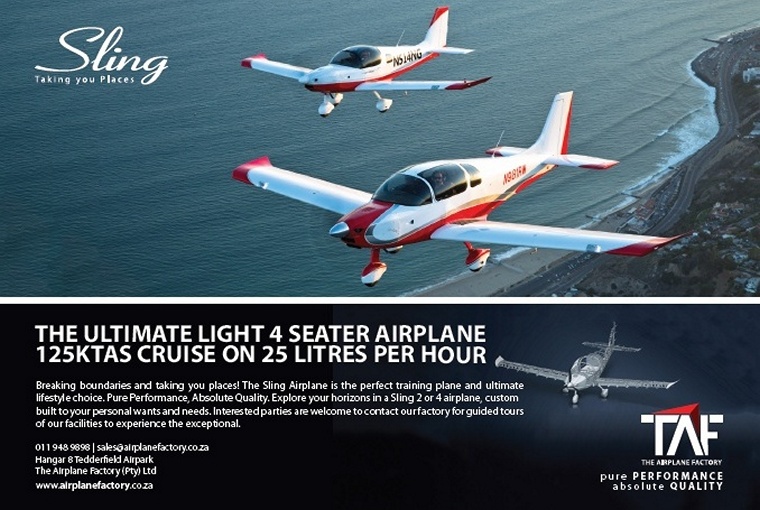

6 DECEMBER 1975
The first airmail flight by a supersonic aircraft is made by the Tupolev Tu-144, carrying mail between Moscow and Alma Ata, within the U. S. S. R
The prototype first flew on 31 December 1968 near Moscow, two months before the first flight of the Concorde. The Tu-144 first went supersonic on 5 June 1969, and on 26 May 1970 became the first commercial transport to exceed Mach 2.
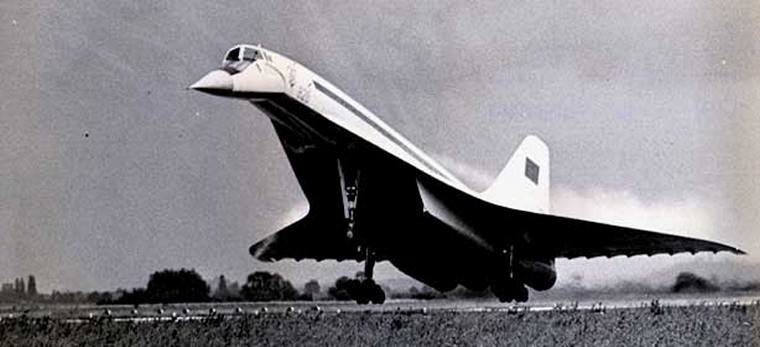
Photo Ralf Roletschek/commons.wikimedia.org
A Tu-144 crashed in 1973 at the Paris Air Show, delaying its further development. The aircraft was introduced into passenger service on 1 November 1977, almost two years after Concorde, because of budget restrictions. In May 1978, another Tu-144 (an improved version, named Tu-144D) crashed on a test flight while being delivered, and the passenger fleet was permanently grounded after only 55 scheduled flights.
The aircraft remained in use as a cargo aircraft until 1983, by which point a total of 102 commercial flights had been completed. The Tu-144 was later used by the Soviet space program to train pilots of the Buran spacecraft and by NASA for supersonic research.
 |
 |
 Copyright © 2024 Pilot's Post PTY Ltd
The information, views and opinions by the authors contributing to Pilot’s Post are not necessarily those of the editor or other writers at Pilot’s Post.
Copyright © 2024 Pilot's Post PTY Ltd
The information, views and opinions by the authors contributing to Pilot’s Post are not necessarily those of the editor or other writers at Pilot’s Post.